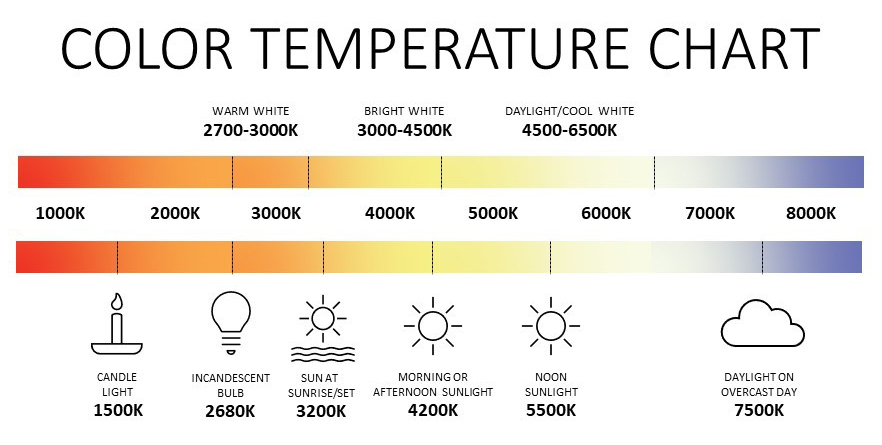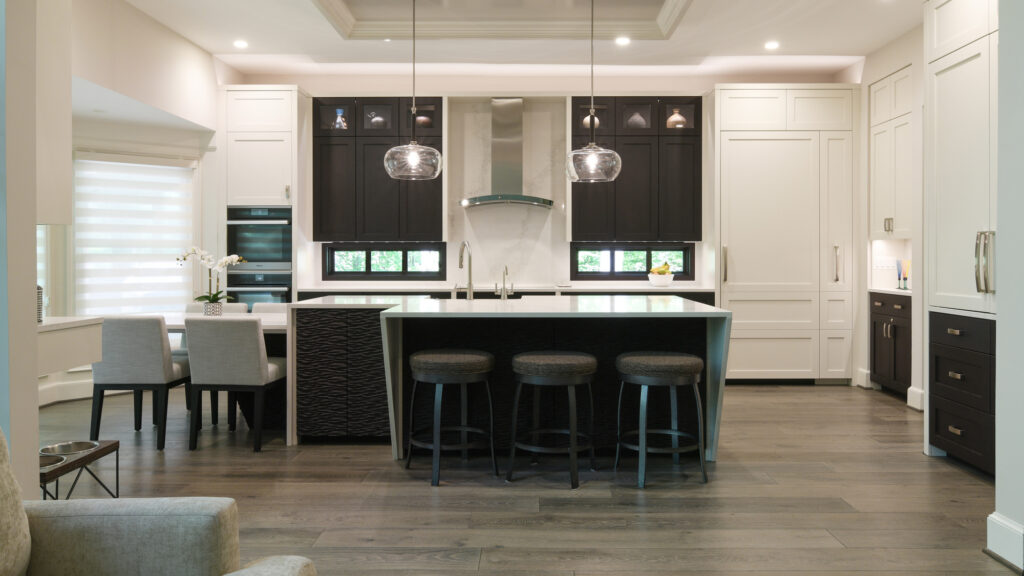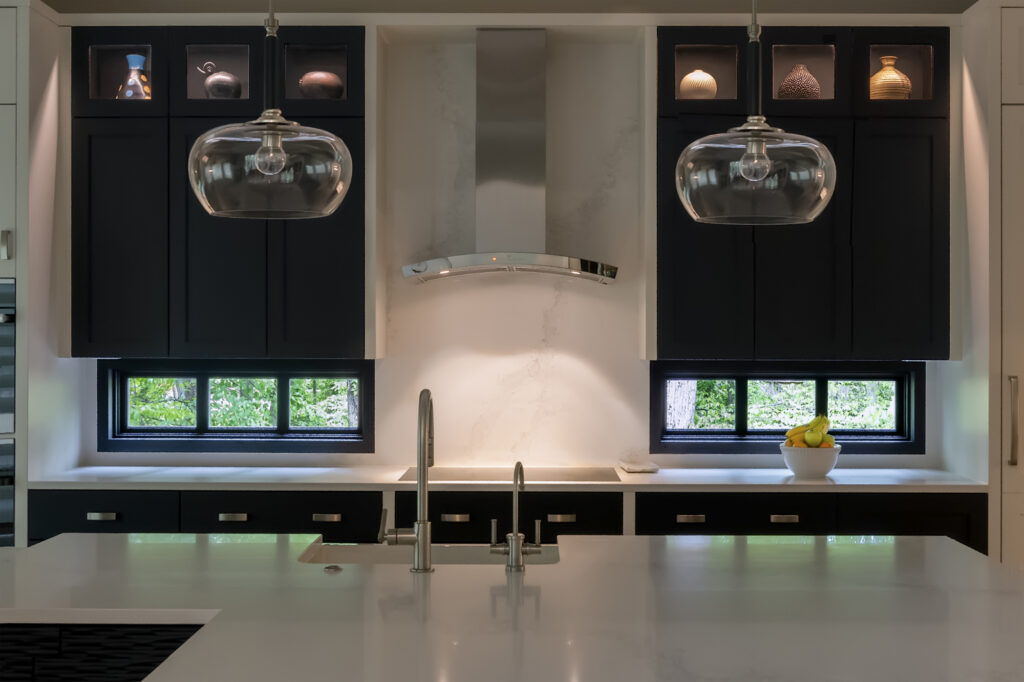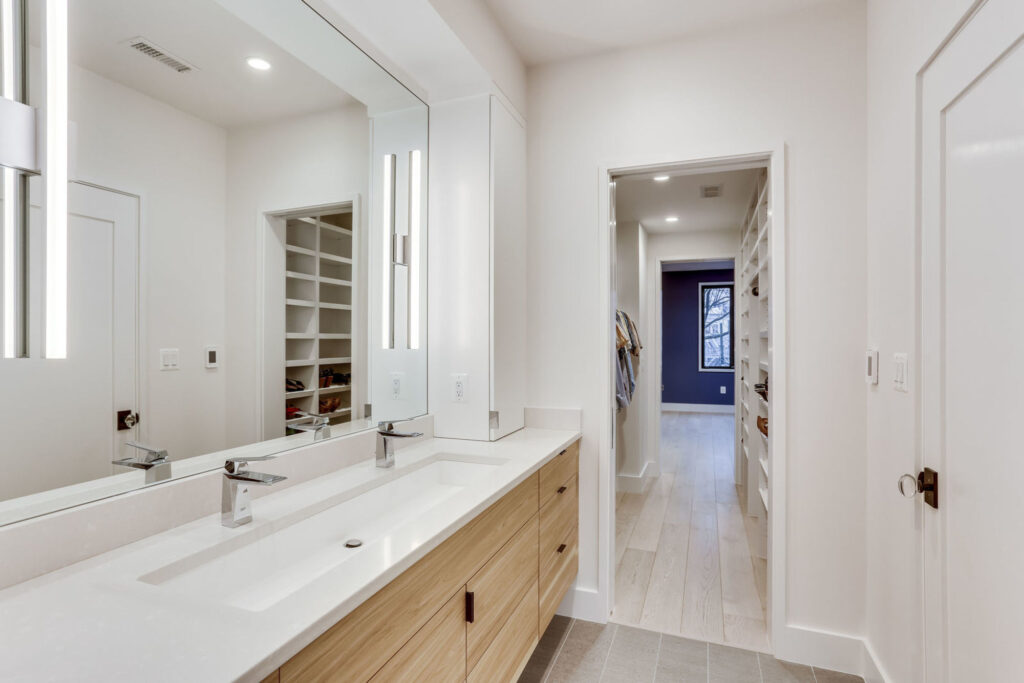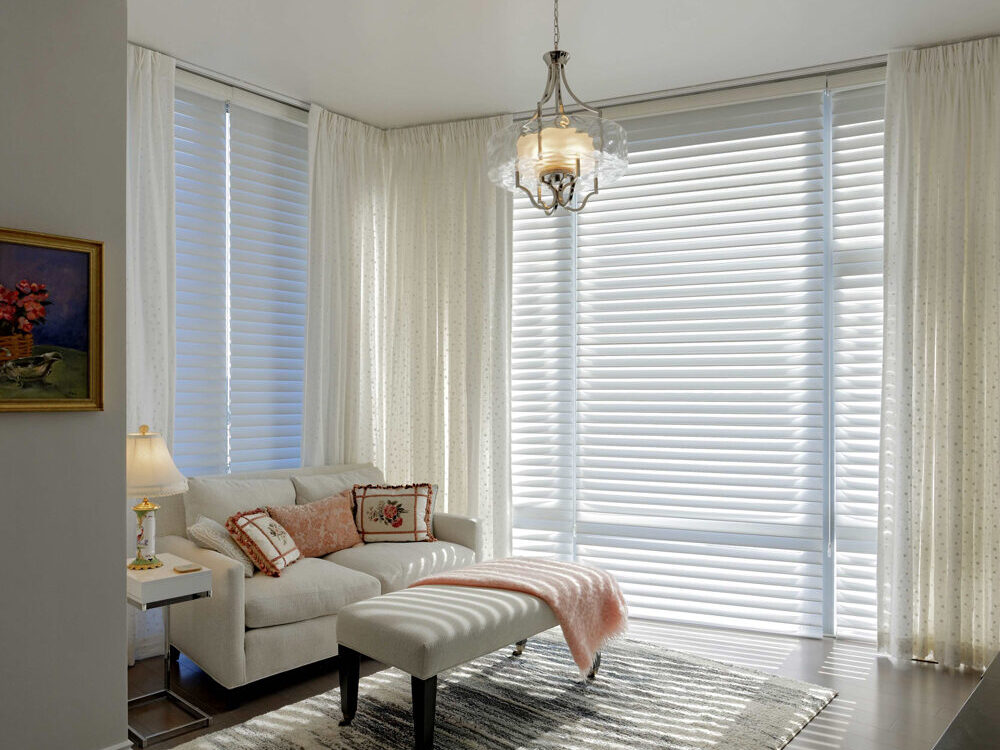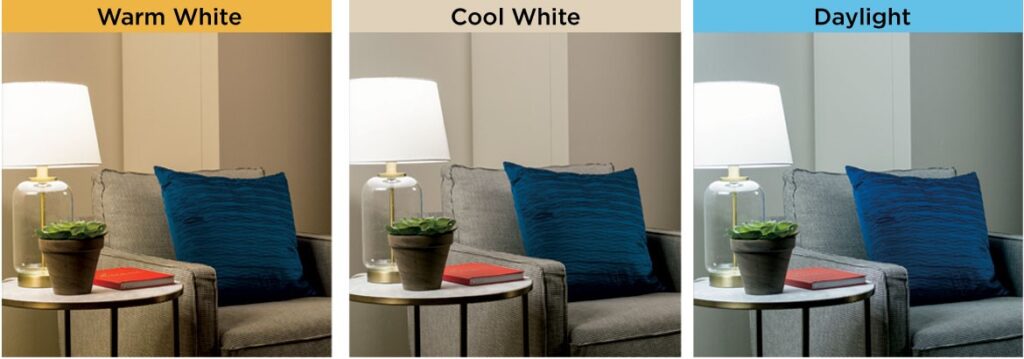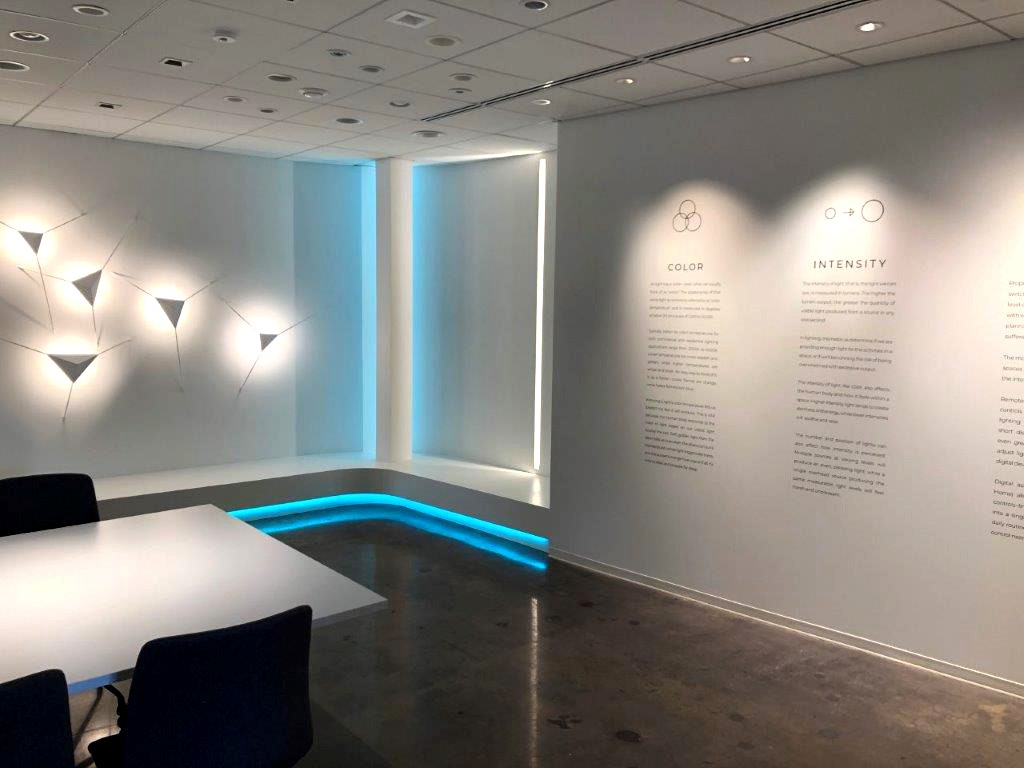Designer’s Desk: How to Enhance Wellness Through Better Lighting
6 Tips for Optimizing Your Lighting and Your Life
We all depend on artificial light to help us perform basic tasks every day. But did you know that lighting has an enormous impact on your health? The amount of light and the type of light you are exposed to causes physiological changes in your body that affect your mental and physical wellbeing. While we cannot always control how much light we are exposed to throughout the day, we do have the ability to control the type of lighting we expose ourselves to in our homes.
Natural Light
The best type of lighting for your home is natural light. When designing a new home, a good architect will site the home with consideration to the sun’s path and use large windows and skylights to direct as much natural light into the home as possible.
Philip Johnson’s Glass House. Photos courtesy Flickr.com
However, not every space can be designed with floor-to-ceiling windows on all sides. Privacy considerations, thermal comfort, budget constraints, and many other factors can make it difficult to attain the maximum amount of natural light in every room. Even if you lived in The Glass House, you would still need an effective lighting system to help you perform basic tasks, create ambiance, and maintain a healthy sleep-wake cycle.
To find out more about the best lighting systems for your home, I spoke with Matt Rowan, Vice President, Residential Lighting at Dominion Lighting. Matt says it is important to “try to do everything you can to align the lighting in your home with the light in the natural world.” This strategy is referred to as “circadian-attuned lighting”.
There are two key considerations when it comes to circadian-attuned lighting: 1) color temperature and 2) position.
In the natural world, cool white light coming from overhead signifies daytime, also our peak activity time. Exposure to this type of light cues the brain to ramp up production of cortisol, a hormone that raises body temperature, blood pressure and heart rate, making us feel awake and alert. Daylight/cool white light with a color temperature between 4500K-8000K is great for say, a hospital or an office building, but is generally unattractive in the home and can lead to sleep disorders, among other negative side-effects.
As the sun sets, it gives off a softer, warmer light coming from lower on the horizon. This causes the brain to produce melatonin, a hormone that makes us feel relaxed, priming us for a restful night of sleep. Good sleep powers the mind and restores the body. Conversely, lack of sleep can weaken your immune system, leaving you more susceptible to illness.
In the morning, the light has a similar color temperature and position as the evening, but because the light is gradually increasing instead of decreasing, the brain suppresses its production of melatonin and begins to produce cortisol again, thus causing you to wake up. Warm white light ranging from 2700K-3000K is the sweet spot for your home. This range provides enough light for you to see well, without flooding your body with stress hormones.
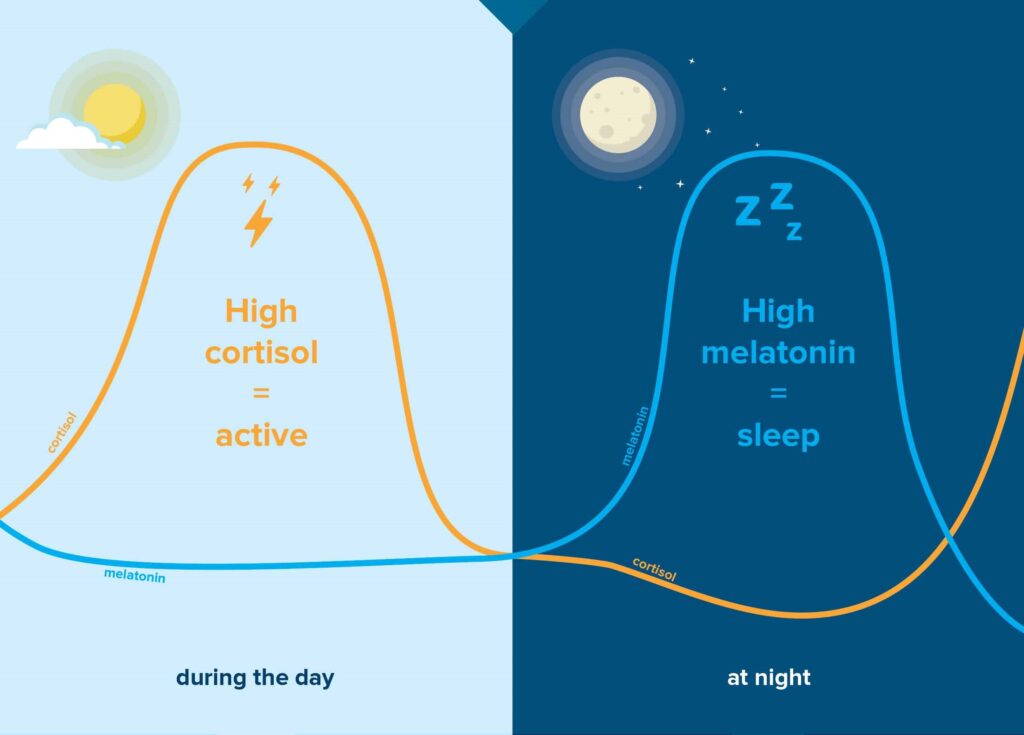
Image courtesy Quora.com
Artificial Light
There is a reason we associate candlelight with romance. The soft, reddish-golden light of a flame (about 1000K-1800K) is universally flattering and contributes to feelings of safety and relaxation. It is no coincidence that the type of lighting we find more attractive, is also better for us. It is the result of centuries of human evolution prior to the advent of electric lights.
I am not suggesting that modern artificial lighting is bad, and that we go back to using gas lanterns. Rather, I am suggesting we take what we know about our natural sleep-wake cycle (aka: our circadian rhythm) and use it as a framework for designing better lighting systems for our homes using newer, better technology.
Technology evolves much more rapidly than human nature, and the sheer volume of information available (some good, some not) can be overwhelming. So, after my conversation with Matt Rowan, I managed to boil it down to a few tips I think will go a long way in helping you optimize your lighting at home.
Here are my 6 key takeaways:
1) Layer your lighting
Overhead lights, such as recessed cans or ceiling-mount fixtures, are great for general lighting but tend to cause glare and cast unattractive shadows. Ideally, Rowan says, overhead lighting should only constitute about 25% of your overall lighting. Think of overhead lights like your plain white t-shirt. A necessary staple that gets the job done but, on its own, is not appropriate for every occasion. Much like you layer your clothing, mixing in different light sources at varying heights goes a long way to improving the look and feel of your home. In spaces where you want to create a relaxing environment, using floor lamps, table lamps, and wall lights will help mimic the dynamic positioning of natural light and eliminate unflattering shadows. In a home-office, kitchen, or bathroom where bright light is necessary, incorporating desk lamps, integrated cabinet lights, pendant lights, or wall lights provide crucial task lighting and adds a decorative element.
2) Put your lights on dimmers
Installing dimmers is one of the best ways to improve your home lighting system. Systems such as Lutron Caseta make it simple to put dimmers on existing hardwired fixtures. The system includes a wall switch and remote control and gives you the ability to control the lights with your smart phone, or smart-home system. For lamps and other plug-in fixtures, they make a smart plug that offers the same capabilities. If that sounds too complicated, and you just want to be able to dim a couple of fixtures here and there, you can use a simple plug-in lamp dimmer. With any of these options, just make sure you buy dimmable bulbs. These products can be purchased online or at your local hardware store.
3) Utilize smart bulbs and a smart-home hub
Take your system a step further by using smart bulbs and a smart home hub, like Google Home or Amazon Alexa, to consolidate the various components. Picture each component of your lighting system (general lighting, accent lighting, outdoor lighting, etc.) as an individual cable. The smart-home hub is like the twist tie that holds all those cables together, so they can be controlled seamlessly from one source. This allows for all kinds of customizable options. For example, if you wake up before the sun rises, you can program the lights in your bedroom to start a slow ramp up 30 minutes before your alarm goes off so when it’s time to get out of bed, it’s not a struggle because your body is awake and ready to start the day. It can even be set up to brew your coffee. You can also use voice-commands like “daytime”, “relax”, and “goodnight”. Matt says to have patience, “It won’t be perfect right away, it takes some tweaking to get it right,” but if you want intuitive functionality in your system, it’s worth it.
4) Look for bulbs with “dim-to-warm” capabilities
Some lighting manufacturers are making bulbs with “dim-to-warm” or “warm-to-cool” technology, such as the Philips Hue White Ambiance line. This bulb allows you to adjust intensity as well as color temperature, better mimicking the dynamic quality of natural light. It goes from a max of 6500K (comparable to daylight on a slightly overcast day) and gradually gets warmer as it dims to a low of 2200K (somewhere between candlelight and an incandescent bulb). You can plug one of these bulbs into your existing recessed light housings, or just about any other type of fixture, and they can be controlled using your smart phone or smart-home system. For your plug-in fixtures, they make a smart plug that gives you the same capabilities when used in combination with the bulbs. Brand name products like Philips Hue can be pricey, but there are less expensive off-brand options out there as well.
5) Unless it is dim-to-warm, stay away from bulbs labeled “daylight” or “cool white”
If dimmers are not an option for you, stick with a warm-white color temperature like 2700K or 3000K. This goes back to the brain’s response to light I told you about earlier. Daylight/Cool White (4500K and up) light exposure at the wrong times of day can be extremely disruptive to your circadian rhythm and can lead to difficulty sleeping and anxiety, among other unpleasant health effects. If you must choose one color temperature for your home, best to choose one that does not induce stress and interfere with sleep. Lighting experts suggest sticking with a warm white (2700K-3000K) to maintain a healthy sleep-wake cycle. Not only will you look and feel better because you’re getting better sleep, the warm color temperature will also give your complexion a flattering glow.
6) Consult an expert
Lighting can be complicated, especially on a large project. If you are already working with a designer on a project, ask them what their approach is when it comes to lighting design and who they partner with for products and guidance. At BOWA, designers such as I, work with experts at Dominion Lighting to develop thorough lighting plans for each project. If you live in the Washington D.C. Metro area and you’re considering revamping your lighting system, I encourage you to make an appointment to visit the Dominion Lighting showroom at 5053 Lee Highway in Arlington. Their knowledgeable team and great resources, such as the lighting lab pictured above, will help you make an educated decision on the best lighting for your home.
I hope these tips help to make your home a place of wellness and light. If you’re interested in knowing more about wellness design, check out my blog post on the 7 Key Concepts of Wellness Design.
Be on the lookout for more wellness-focused design blogs from me in the future. Until then, take care and be well!

Connect with Stephanie on LinkedIn or Houzz.
The use of this content is for the purposes of education consistent with 17 USC §107.
OTHER POSTS

